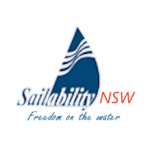

The Newsletter of Sailability NSW
July, 2024

From the President
In This Issue…
Welcome to the first edition of the Sailability NSW online newsletter. Our intention is to publish the newsletter online every other month. Winter may be here and a lot of our Branches are closed, but the NSW executive are working harder than ever. A few months ago Eli Demeny retired from the NSW executive and Randell Laborde has taken on the publication of our newsletter. Thank you Eli for the time that you spent on the Sailability New South Wales committee and the work that you did attending seminars to produce our child protection and gender equity policies, these are required for Sailability to provide sailing to the community.
If you have any comments or suggestions regarding the newsletter please email them to newsletter@sailabilitynsw.com.au. If you have anything that you wish posted on the website, please email them to webchages@sailabilitynsw.com.au.
A general meeting is being scheduled for the branches to come together and discuss with the NSW executive some changes on how the executive functions with the intent to make Sailability in New South Wales stronger, resilient and ready to tackle challenges into the future. More details will be forthcoming shortly.
There are many exciting things coming up in the next few months including the 2025 HANSA world titles at the Royal Prince Alfred Yacht Club Pittwater. This will be a great time for branches sailors and volunteers to all come together to support, promote and cheer on our sailors and their crews.
Events Calendar
- Belmont Regatta 10-11 August, 2024
- Hansa Class National Southport, Qld from 20th-25th October, 2024. https://southportyachtclub.com.au/regattas/2024-international-hansa-class-asiapacific-championships
- Hansa International Championships Royal Prince Alfred Yacht Club March 2025
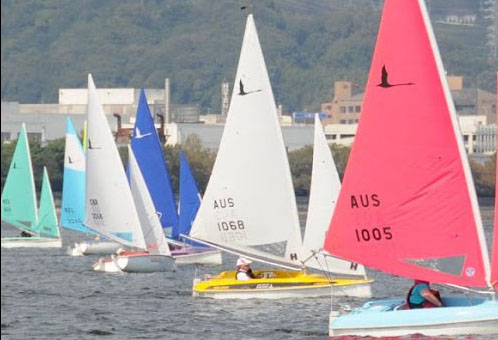

Equipment Exchange/Marketplace
- Item 1 available listed here with contact information and date posted
- Item 2 wanted listed here with contact information and date posted
- Example: Sailability Z is looking for other branches to do a bulk shirt and hat purchase. contact Matt at Sailability x. Posted 1/7/24
Please write to newslettter@sailabilitynsw.com.au regarding equipment/items wanted or surplus.
How to Organise a Bunnings Sausage Sizzle
Organising a Bunnings Sausage Sizzle requires a lot of planning, preparation, and effort, but is an excellent source for revenue for a branch. Moira Magrath, Branch Secretary for Sailability Port Macquarie has graciously provided detailed answers regarding the ins and outs of running a successful Bunnings Sausage Sizzle. Below are Moira’s insights:
-
How to contact Bunnings
-
Is it easy to get a spot in their rotation?
-
How long before getting notified regarding acceptance?
-
How many people are needed to operate a successful sausage sizzle?
-
When do people need to show up?
-
What equipment does Bunnings provide, what needs to be brought?
- the sausages – I buy the packs of 24 from Coles which is nearby, and I order them about a week prior.
- Bread – Coles again and ordered a week prior
- Onions – our local greengrocer can supply sliced onions but they have become very expensive, so I have taken on buying and slicing my own – but you’d have to be a pretty keen volunteer to do this!
- Drinks – Coke, Coke no sugar, lemonade, Solo, 600 ml water – you can add other flavours like Fanta or Sunkist orange. I buy in advance when the packs are on special at half-price in the supermarket– do not leave this until the last minute as the full cost eats a lot of your profit
- Serviettes – about $1 per 100
- You will also need eskies – 1 large 1 for your sausages, 1 smaller for your onions and 4 or 5 for your drinks
- Ice – for the drinks as well as the sausages – on a hot day you really need to look after the meat.
- Vegetable Oil
- Condiments:
- Tomato Sauce
- Barbecue Sauce
- American Mustard Sauce
- Chilli sauce either sweet or hot or both
- I provide the utensils:
- Knife for cutting the sausages
- Wooden – handled scraper (paint scrapers are great) to clean down the hot plate
- Wooden-handled tongs preferably x 2 – cooks prefer them so they reduce burnt hands when they leave the tongs on the hotplate
- Tea towels
- Paper towel
- Detergent for clean-up
- Hand sanitiser
- Empty bottle for used oil
- Trays for passing sandwiches to customers
-
Do you need a credit card/eftpos reader?
-
Do you need to acquire food, drinks, condiments, supplies ahead of time? If so, what restrictions does Bunnings place on these?
-
When does the sizzle end?
-
How long does clean up take?
-
Generally, is enough money earned to make it worthwhile to do?
-
How is Bunnings equipment returned?
-
Have your volunteers found it to be a positive experience?
-
Any other things a branch needs to know before deciding to do a sausage sizzle?
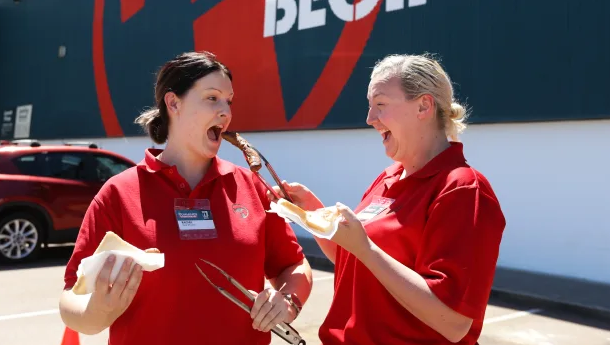
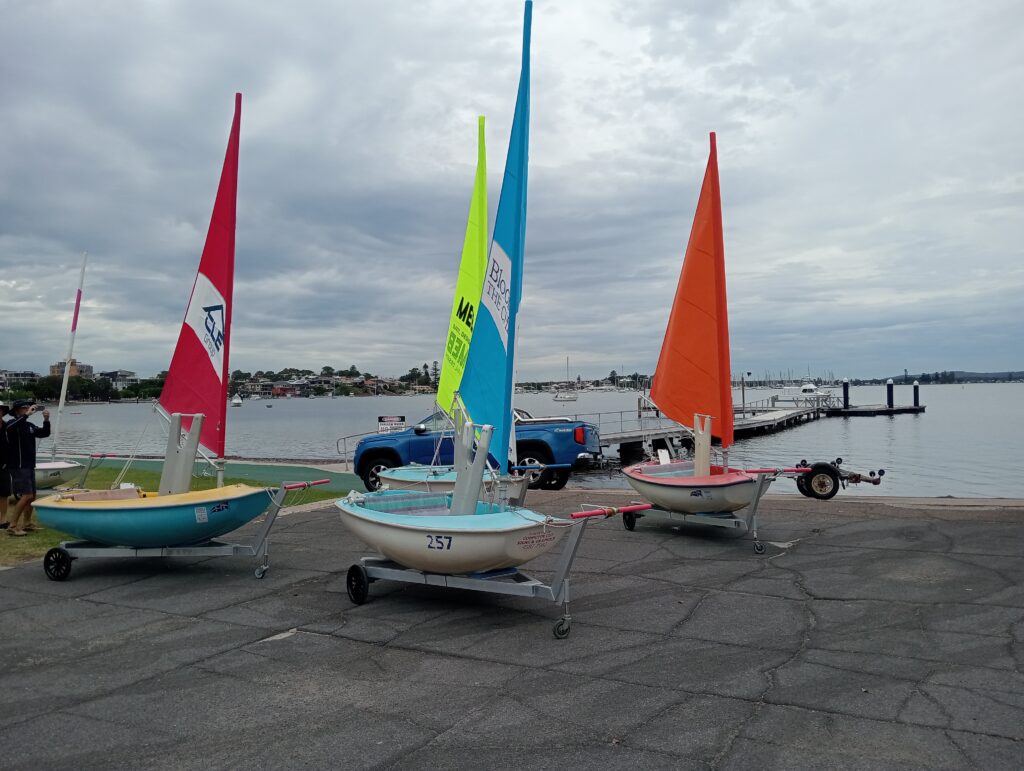
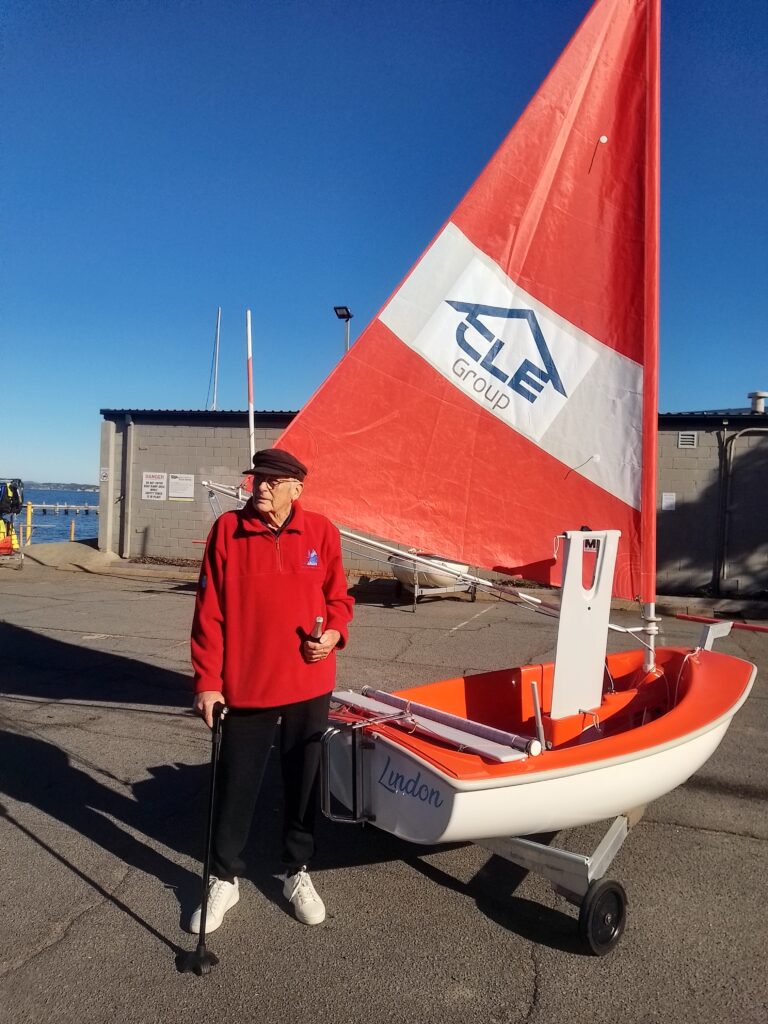
Spotlight on Sailability Belmont
Winter Regatta
Sailability Belmont is hosting their Winter Regatta 10 and 11 August. Both single and double events will be held. Please contact Chris Syme at chris.syme@hotmail.com for more information. Sailability Belmont has a very busy sailing schedule. Sailing occurs Tuesday through Fridays throughout their sailing season. Their season is extensive as well: operating about 10 months a year. Sailability Belmont takes July off and the time from Christmas to mid-January. Chris Syme, the Sailability Branch President, says that he loves the sailing, and he loves the fun. Sailability Belmont sails from the Belmont 16 Footers Club, which is located on the North End of Lake Macquarie. They use. 2.3’s and 303’s and can use up to 9 boats at a time. Chris says that he prefers the 2.3’s as they are easier for participants to get in and out. They have three hoists available for assisting sailors with limited mobility. Chris says that the safety boats are primarily used when their boats have rigging problems or need to be towed due to low winds. Sailabiliity Belmont charges participants an annual fee of $50. Individual sails are typically about 45 minutes.Involvement
Chris finds many aspects of Sailability quite rewarding. He particularly likes the positive enthusiasm for sailing shown by the participants. He also enjoys having a great group of volunteers who make a cohesive team. It can be difficult to find enough volunteers during their winter season as many of their regular volunteers travel are unavailable. Sailability Belmont has used Centrelink as a way to assure that they have enough people to operate the land-based aspects of operating Sailability. Sailability Belmont uses a variety of means to recruit new volunteers and participants. However, Chris says that the best way they have found for recruiting individuals is via word of mouth. For example, if a staff person from one organisation that has Sailability participants moves to another organisation soon people from the new organisation start attending. Sailability Belmont holds an annual Volunteer Appreciation dinner which is hosted by the Belmont 16s Sailing Club.Special Conditions
Challenging aspects of Sailability include getting enough volunteers during winter months, weather that seems to be getting more extreme, and dealing with cancellations due to weather. He thinks that the weather has become more of a challenge and may steer prospective volunteers to other volunteer activity. He also thinks having weather extremes affects their participants as well. Chris states that due to their location on the lake winds from the South or Southwest pose a particular problem. They are unable to sail in these winds if blowing greater than 12 knots from the South or Southwest.Special Sailability People
Chris spoke about one of the Sailability Belmont people who began as an active volunteer and then became a participant. Amy is their star “Dolphin Lady” who is always positive and enthusiastic. Due to a serious COVID reaction she is now confined to a wheelchair. She transitioned from volunteer to participant, but she does not want to miss sailing. If she hadn’t been a Sailability volunteer she most likely would not have known about Sailability. Chris also spoke about another volunteer who has the gift to lift everyone’s spirit. He is he has a way to make everyone feel good he makes people feel good and have fun.How Sailing/No Sailing Alerts are Handled
Sailability Belmont uses the WhatsApp communications app as their Sail/No Sail decision. The WhatsApp program is used for many different things including sharing photos, videos and making announcements. For example, requests for more volunteers when more than anticipated are needed. Working bees are announced through this WhatsApp. Everyone involved in Sailability Belmont receives the announcement and is invited to participate. Each person, when they sign up for Sailability is put onto the WhatsApp list. A separate WhatsApp list is used for committee work. Sailability Belmont is a very active branch who involves many people who can join together and have fun!Spotlight on Sailability Tweed Heads
It wasn’t that long ago that Sailability Tweed Heads volunteers had to carry boats over rocky paths in order to launch – that includes the safety boat and its motor! Fortunately, those days are over. Now, there’s a new, less problem prone way to get to access, launch and store their boats and equipment. This is just the start. Once details are worked out a new parking area new, floating pier and ramp will be added making for quicker and more convenient setup, usage, and storage.
John Stead, Sailability Tweed Heads branch president, was interviewed for this article. He says that he finds being part of a local group that provides a sailing experience to and with people with disabilities one of the most rewarding aspects of being involved with Sailability. He has been a member of Sailability since 2018.
Sailability Tweed Heads is the furthest North Sailability NSW branch. If it was any further north the branch would be in Queensland! Sailability Tweed sails from the Dry Dock Reserve off Dry Dock Road on the Terranora Creek, a tributary of Tweed River. They operate out of a 40 foot shipping container, recently adding a second container (after a three year wait to get approval!) located on crown lands. Major renovations are coming, however, through NSW Maritime. These renovations include a parking area, ramps and pontoons. These changes have been approved and will occur in the future.
Being in a warmer climate than most other branches, Sailability Tweed sails year round except for NSW school holidays. A break is taken from a bit before Christmas to the beginning of February. The branch sails once weekly on Wednesdays, weather permitting. Generally, each sail lasts about half an hour.
Currently no school children are sailing. Most participants are in their 20s.
The Tweed branch obtains its operating income by charging each participant $10 per session. On occasion the branch receives funding from local service organisations. The branch was fortunate to recently receive a $2000 grant from the local Lions Club to help meet operating expenses.
Special Conditions
Sailors encounter two special conditions: strong tidal flow and sudden gusts due to having to cross an area with a bridge that produces a wind tunnel effect. Sailors have to be prepared for the potential gust! A very challenging part of sailing is having little or no wind with a strong tide. The safety boat can be kept busy providing necessary tows back to base!How Sailing/No Sailing Alerts are Handled
One of the Tweed volunteers who had worked in the telephone industry set up a special telephone number. Everyone involved in Sailability Tweed Heads can call this special number and hear a recording whether conditions allow sailing that day or not. The message is made available at 7:30 am on sailing days to allow those who travel a great distance know whether or not to make the trip to Sailability.Involvement
Volunteers have been recruited through the local radio stations and newspaper. The Tweed Valley Weekly will highlight the branch and conduct interviews. Sailability Tweed has been able to fill both on-land and on-water roles needed to operate a Sailability sailing day. Land-based roles such as coordinating participants movement to and from their pontoon are handled through volunteers. You don’t have to be a sailor to enjoy being part of Sailability! Currently the branch has about 24 volunteers. Several evening social events are held during the year to provide a casual setting for volunteers to get together. New participants find out about the branch through existing service providers and through word of mouth. While many participants are involved with a service provider some participants are independent of any service providers and hear of Sailability Tweed and come and join. About half of the participants use a wheelchair or are require special assistance getting in and out of the boats. Individuals who need a sling for boat entry and exit bring their own sling. Each participant is encouraged to do as much of the sailing as is possible.Changing Lives
When John was asked about how someone’s life was made better through their participation in Sailability he mentioned that there are several participants who are very disabled, who are non-verbal and often non-responsive. When questioning their carers about whether these participants benefit from sailing, the carers reply that there is a is big difference in happiness and contentment on sailing days. Sailability can be great for so many people!A Special Sailability Person
Sailability Tweed has a 94 year young volunteer. He’s very active in the branch and loves sailing. Outside of Sailability he stays active riding a push bike and a 850cc motor bike. He is amazing! We imagine that the Tweed Heads crew are feeling nostalgic for the “good old days” of hand carrying boats and equipment!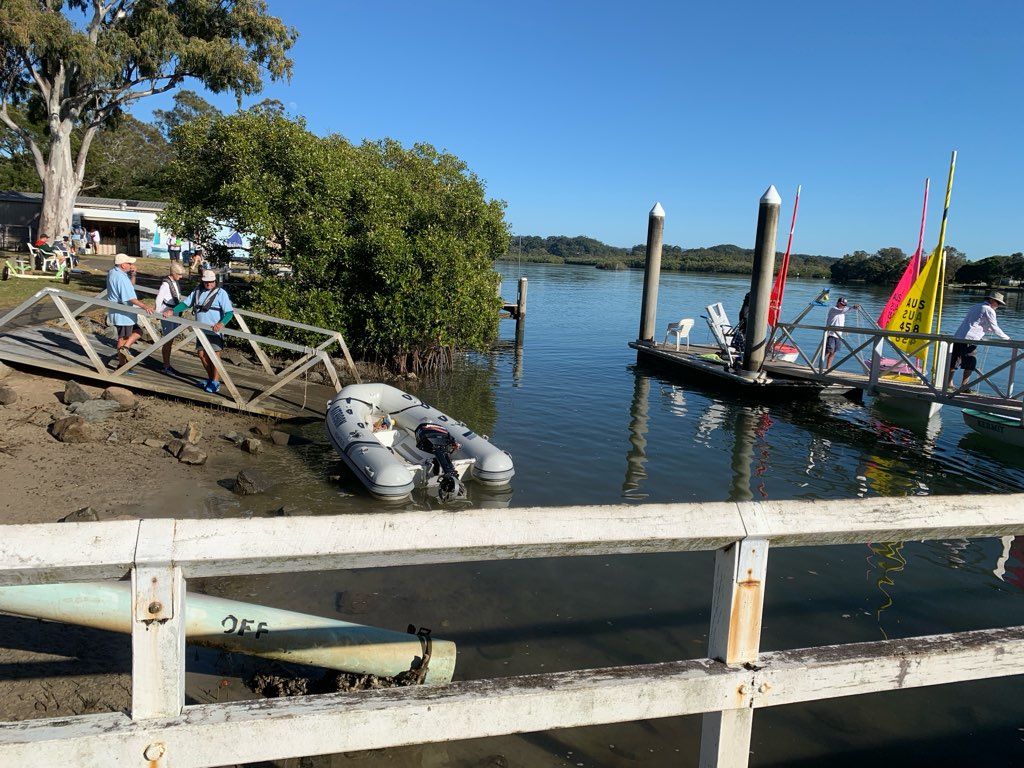
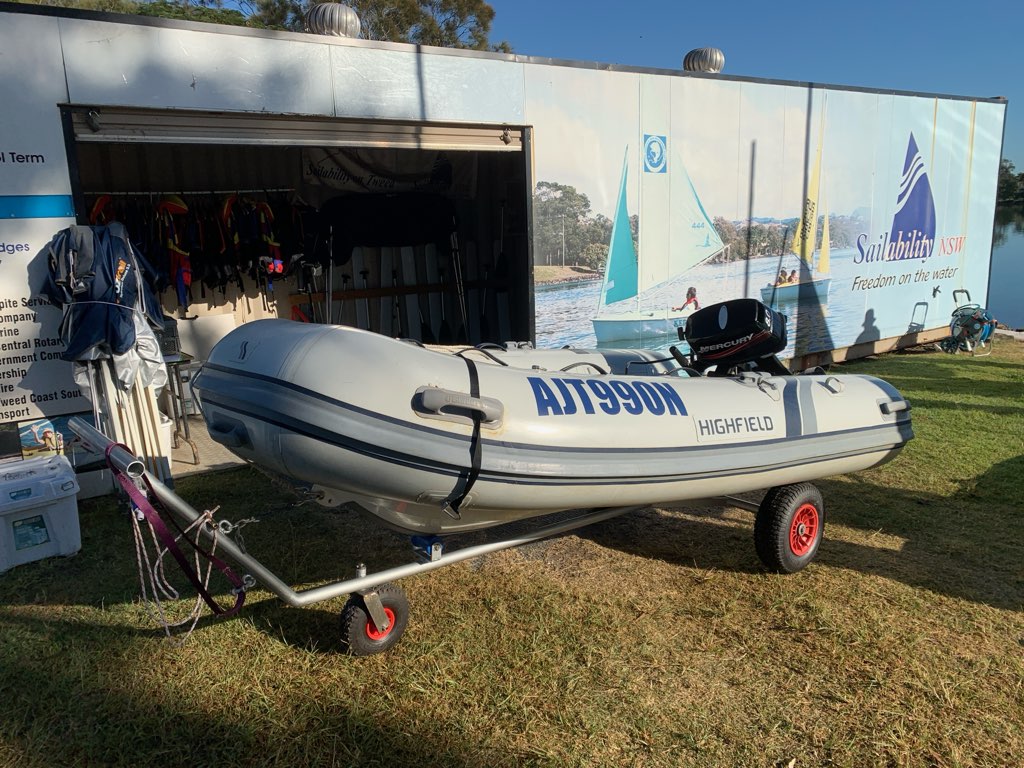
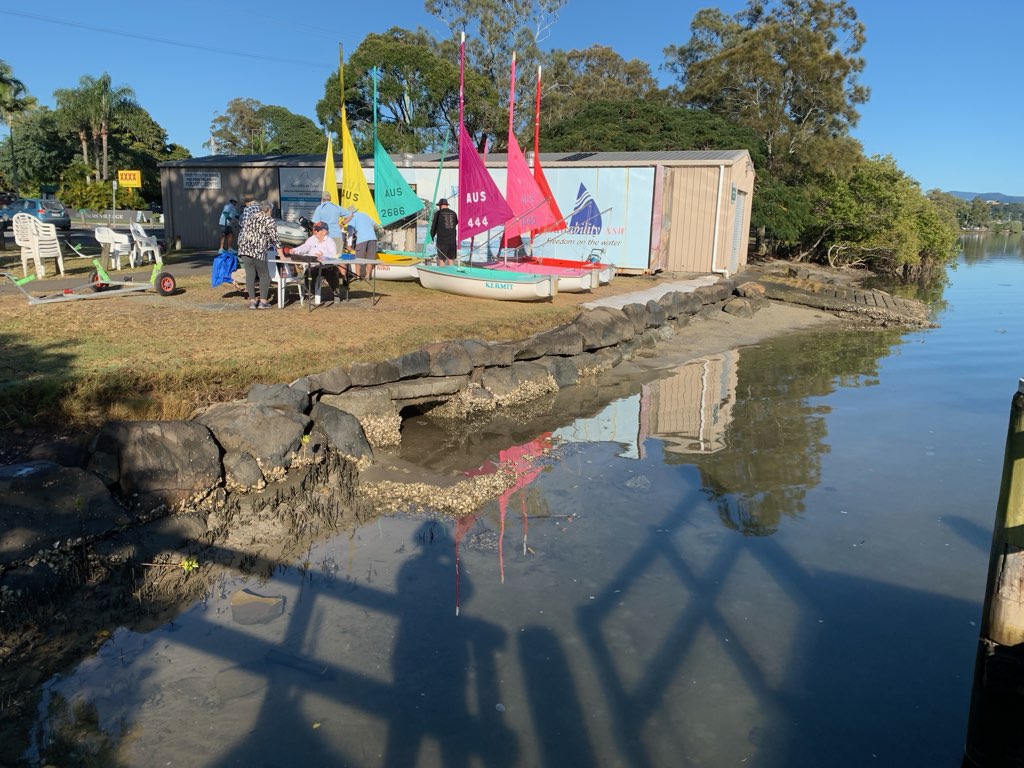
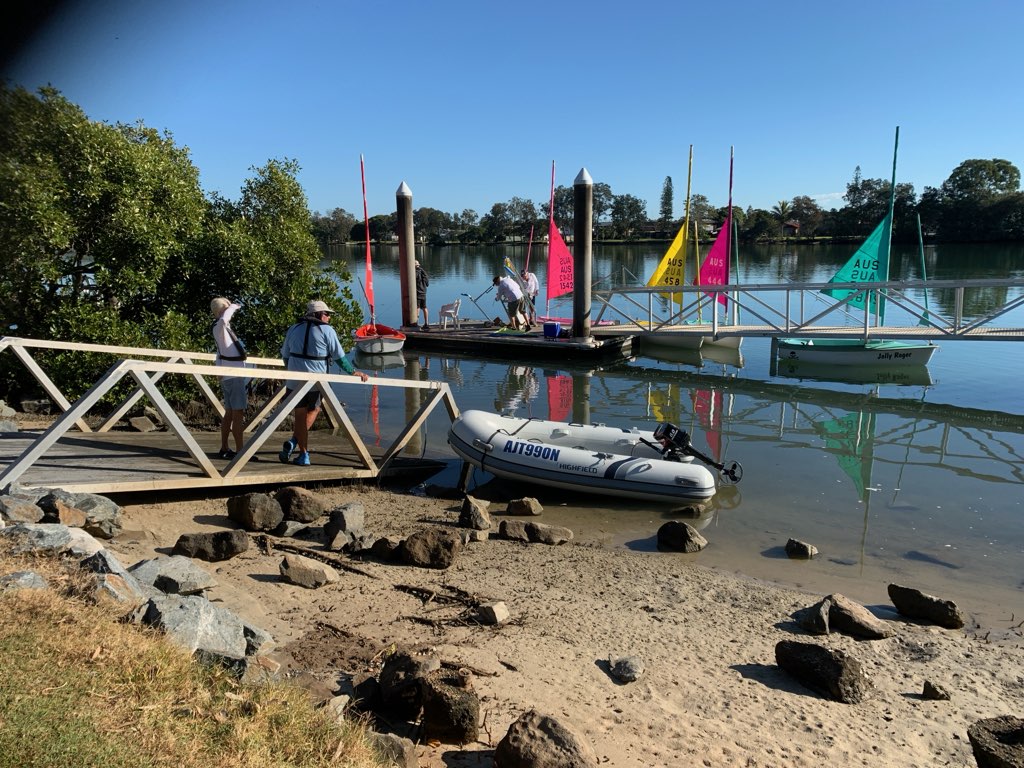
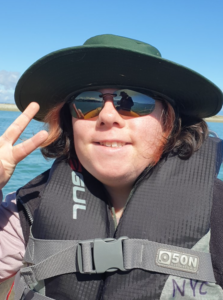
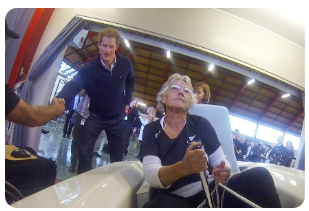
Sailability Around the World… New Zealand
There are 10 different Sailability branches in New Zealand. Each is organised as an independent charitable volunteer trust with a governing body. All rely upon sponsors for funding. The 10 Sailability branches are located in Auckland, Hawkes Bay, Nelson, Otago, Rotorua, Taranaki, Tauranga, Waikato, Wellington, and Whangarei. Eight are located on the North Island and two on the South Island.
A brief mention of several New Zealand Sailability branches…
Sailability Auckland has been in continuous operation since 1991. They have an extensive array of programs and operate year-round. These programs are:
- Learn to race using 303s and Liberties
- Recreational sailing Liberty and 303
- Advanced Liberty and 303
- Group sailing
- Skud 18
- Sailing Simulator
Announced Grants
Sport Access Foundation – has announced the Bluescope Sporting Club Grant. This foundation has a total of $8000 available with a maximum of $2000 per grant. Applications are open until 16 August, 2024. This program aims to improve inclusion and strengthen the participation of young people with a disability in their local sporting clubs.
Australian Sports Commission – Local Para Champions – This program aims to provide financial assistance for participants aged 12 to 24 attending an eligible state/territory, national or international championships, where the championship is specifically for athletes with a disability. $500,000 is available. Applications are open until 31 July, 2024.
Deafness Foundation – Community Grants – This program aims to support projects that support the deaf and hard of hearing. Applications are open until 31 October, 2024.